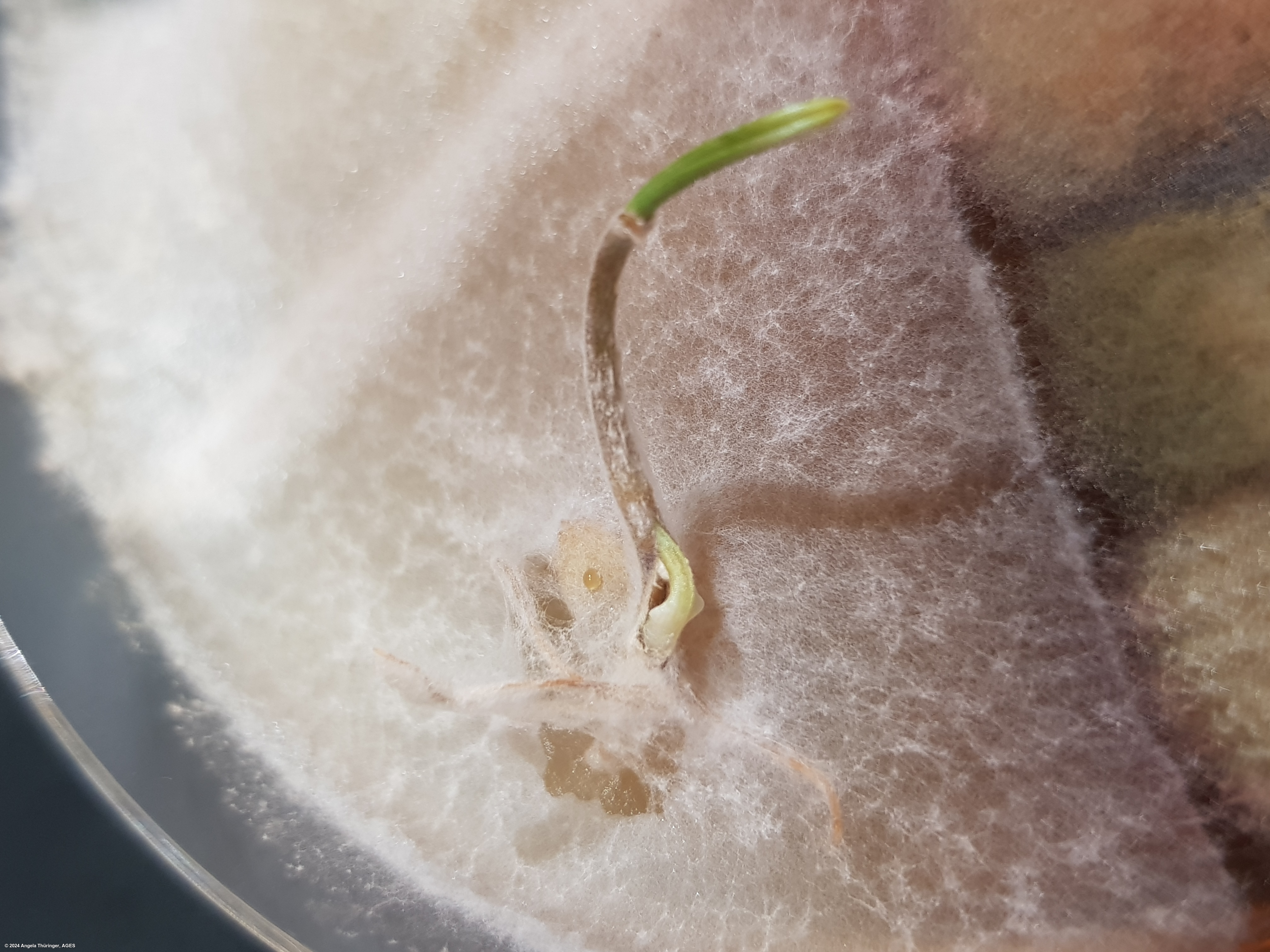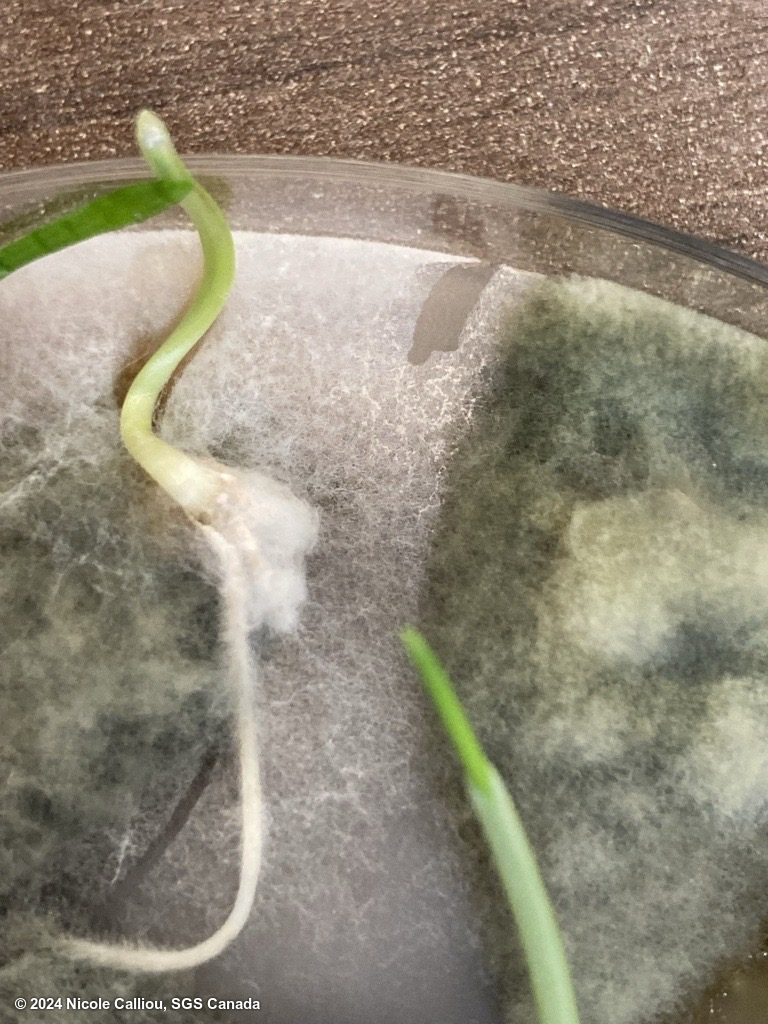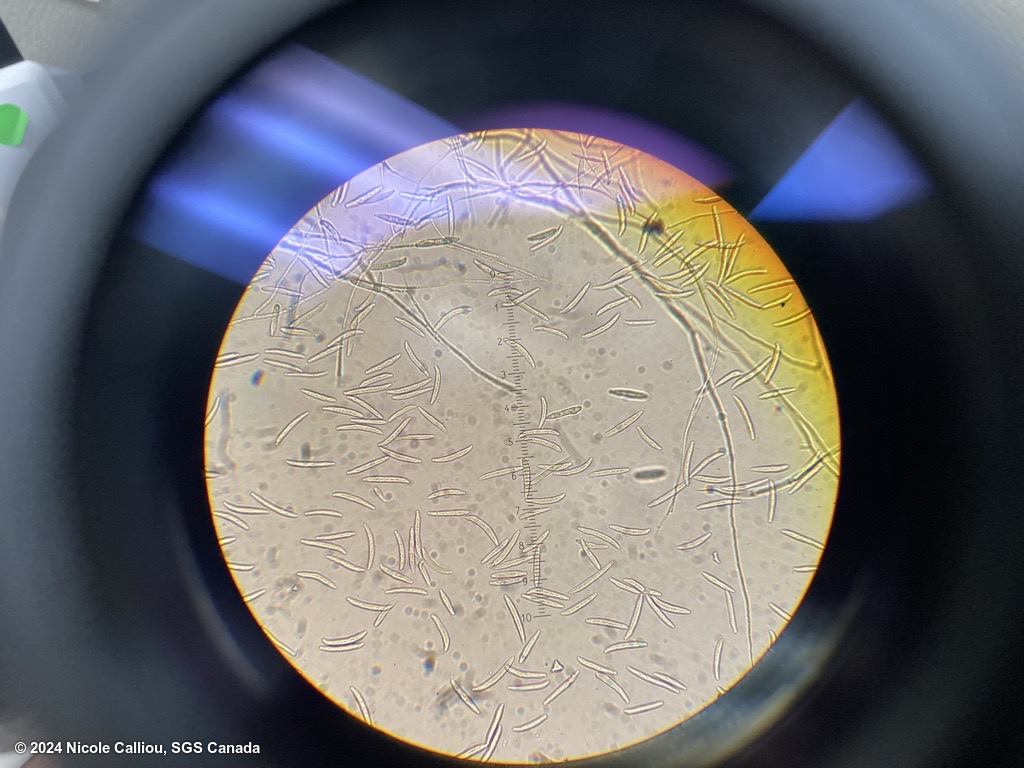Microdochium nivale
Overview
|
Scientific name
|
Microdochium nivale |
|
Genus
|
Microdochium |
|
EPPO code
|
MONGNI |
|
Common name
|
Pink snow mold |
|
Synonyms
|
Fusarium nivale |
Description
Results are often expressed as Microdochium spp, as morphology of M. nivale can overlap with M. majus.
Examine the plates after 7 days of incubation in an appropriate growth chamber, looking for relatively fast growing colonies, expressing felted aerial mycelium that is white to very pale pink, and the reverse of the colony should be colourless to light orange. When incubating in the dark, the colonies are often white, and if exposed to daylight or nUV for 24 hrs, then a salmon pink/orange colour should develop. Conidial spores may be present, forming sporodochia and seen as a pale orange mass. Microconidia are absent. Macroconidia are small, 1-3 septate, curved with blunt terminal cells that are indistinguishable from one another. The basal cell may be notched, but is never foot-shaped (Nelson et al, 1983). Size: 10-30 x 2.5-5 um (Booth, 1971). Conidial morphology is variable with overlap between M. nivale and M. majus. Microconidia and chlamydospores are absent.




